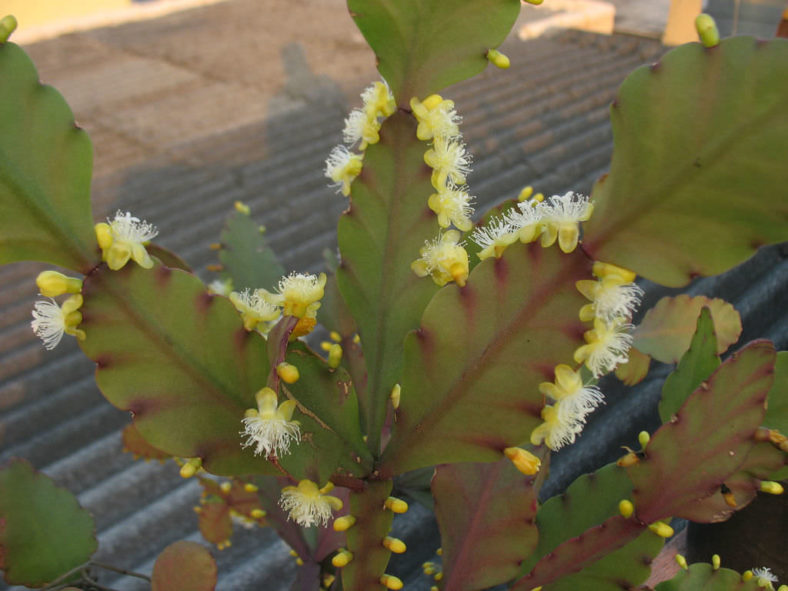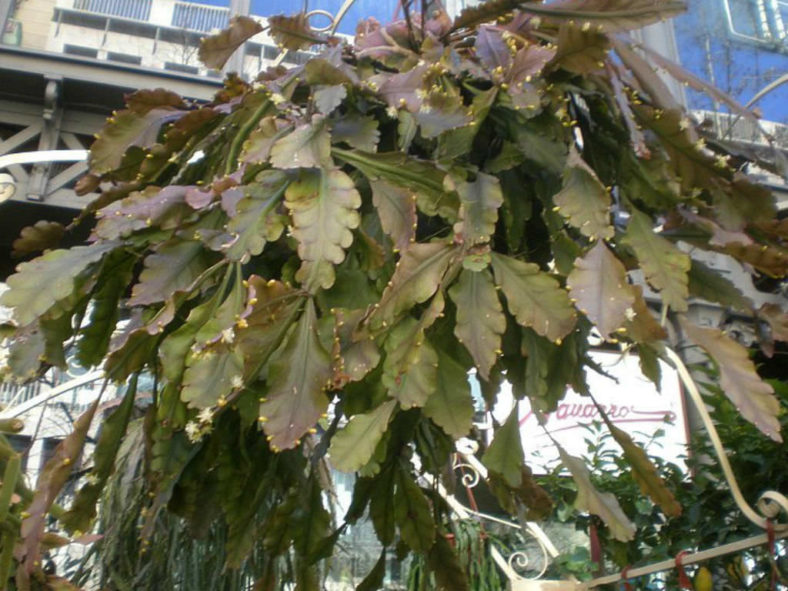Scientific Name
Rhipsalis pachyptera Pfeiff.
Synonym(s)
Hariota pachyptera
Scientific Classification
Family: Cactaceae
Subfamily: Cactoideae
Tribe: Rhipsalideae
Genus: Rhipsalis
Etymology
The specific epithet "pachyptera" (pronounced "pak-ee-TER-a") means "thick-winged" and refers to the winged stem segments of this species.
Origin
Rhipsalis pachyptera is native to Brazil (Rio Grande do Sul, Santa Catarina, Paraná, São Paulo, Rio de Janeiro, and Espirito Santo). It grows as an epiphyte or lithophyte in mostly open habitats.
Description
Rhipsalis pachyptera is a spineless, much-branched cactus with semi-erect to somewhat pendent stems composed of many, winged to three-winged segments. The stems are green, often tinged with red, and can reach a length of up to 5 feet (1.5 m).
The primary stem segments have a cylindrical base and can reach lengths of up to 16 inches (40 cm) and widths of 1.2 inches (3 cm), while the secondary stem segments can grow up to 10 inches (25 cm) long and 2.8 inches (7 cm) wide, ending in a truncated or rounded apex.
The white or yellow flowers appear from the areoles between the margin projections in winter. They can reach a length of 0.6 inches (1.5 cm) and a diameter of 0.9 inches (2.2 cm). The fruits are spherical, ranging in color from pinkish to white as they develop.

How to Grow and Care for Rhipsalis pachyptera
Hardiness: USDA hardiness zones 10a to 11b: from 30°F (-1.1°C) to 50°F (10°C).
Rhipsalis do not thrive in direct sunlight. Exposure to the afternoon sun can cause the stems to burn, turn yellow, or develop spotting. However, they will not bloom without sufficient sunlight, and their growth can be stunted as a result. Therefore, these cacti do best with morning sun and full shade in the afternoon.
As Rhipsalis is commonly grown indoors, care must be given to the placement of the plants. They should be kept at least 20 inches (50 cm) from windows that receive midday or afternoon sun. The glass in the windows can multiply the heat from the sun's rays, causing sunburn on the leaves. Keep in mind that in its native environment, Rhipsalis is accustomed to receiving light filtered through dense, overhanging tree branches. Picturing this environment can help you adjust your lighting accordingly.
Rhipsalis is not a drought-resistant plant, so regular watering is essential. Overwatering, however, can cause weak stems and rotted roots. Using a watering can helps you measure the amount of water you are providing. The pot's size compared to the plant's size, the humidity levels in the home, and the type of potting soil used can all affect the watering frequency.
Learn more in "How to Grow and Care for Rhipsalis."
Links
- Back to genus Rhipsalis
- Succupedia: Browse succulents by Scientific Name, Common Name, Genus, Family, USDA Hardiness Zone, Origin, or cacti by Genus
Photo Gallery
Click on a photo to see a larger version.


